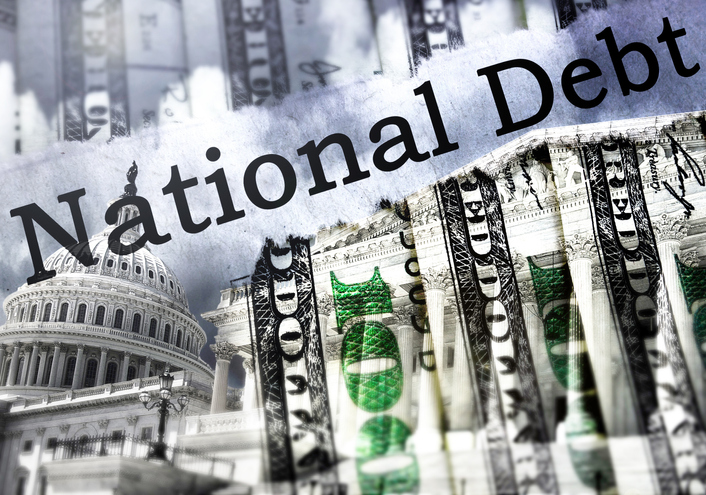The economic news in May was dominated by the US debt ceiling, with a compromise deal reached at the last minute and approved by the Senate at the start of June.
The Dow Jones Industrial Average Index fell by 3.5% over May and finished the month down 0.7% year to date, while the technology-heavy Nasdaq Composite Index reversed some of last year’s losses to finish May up almost 25% year to date.
The annualised rate of Consumer Price Inflation (CPI) in the US eased from 4.9% in April to 4% in May, having fallen every month since its recent peak of 9.1% in June 2022, but still significantly higher than the Federal Reserve’s (Fed’s) target of 2%.
The Fed left rates unchanged at the Federal Open Market Committee’s (FOMC’s) June meeting, having raised its key federal funds rate at the previous ten consecutive meetings. The federal funds rate remained at a range of 5% to 5.25%, as policymakers voted unanimously to pause and take time to evaluate the impact on the economy of the tightening measures imposed by the central bank since March 2022. Rates are widely expected to increase again as soon as next month, and Fed Chair Jerome Powell has ruled out any cuts this year.
The UK’s CPI rate remained at a disappointing 8.7% in May, having been expected to fall slightly, prompting the Bank of England to raise the base rate by 0.5% to 5.0% at its June Monetary Policy Committee meeting. Of great concern was the fact that “Core” inflation, which strips out volatile factors such as direct energy and food prices, along with alcohol and tobacco prices, continued to rise in May, at its fastest rate for 31 years. This has been attributed, at least in part, to rising wages in the service sector, as hotels and restaurants struggle to recruit and retain staff. Food price inflation, which is the rate at which prices for groceries have risen compared to the year before, was 18.3% in May, down slightly from 19% in April.
The benchmark FTSE100 Index breached 8,000 points for the first time during February, but finished May down 1.4% year to date, while the FTSE250 finished May down 2.2% year to date.
The European Commission raised its economic growth forecast for the EU this year from 0.8% to 1%, but also increased its 2023 forecast for inflation to 5.8%. Meanwhile, Germany slipped into recession in the first quarter as inflationary pressures continued to curb activity. Revised data from the Federal Statistical Office showed that Germany’s economy shrank by 0.3% during the period, having contracted by 0.5% in the final quarter of 2022.
In Japan, the Nikkei 225 Index rose by 7% in May and reached its highest level for almost 33 years during the month, boosted by weakness in the yen and relief over the US debt deal. To the end of May, the Index was up over 21% year to date.
Closer to home, official figures from NISRA (the Northern Ireland Statistics and Research Agency) showed that Northern Ireland emerged from a technical recession in the final quarter of 2022, with growth of 1.4%. Northern Ireland’s economic output is now 5.6% above pre-pandemic levels and has finally surpassed its previous peak in the third quarter of 2007.
We are always available to discuss any queries or concerns, so just call or drop us an e-mail.
This article is for information only and should not be construed as advice or a recommendation. You should always seek independent financial advice prior to taking any action.
The value of your investment can go down as well as up and you may not get back as much as you originally invested.


